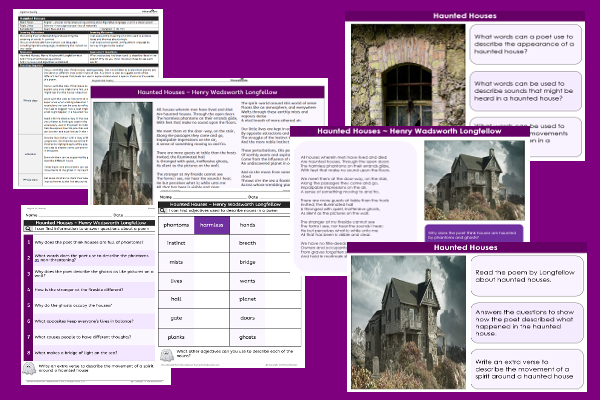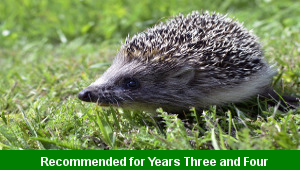Home > Key Stage Two > English > Reading > Comprehension
Haunted Houses

This English reading teaching pack for Key Stage Two gets the children to read and answer comprehension questions about some of the examples of figurative language used in a classic poem about a haunted house
The class can try adding some of their own verses to extend the poem describing the movements and actions of a ghost character through a haunted house.
Download this teaching pack including a shared reading text, activity worksheets and an interactive presentation to teach the children to read and answer comprehension questions about figurative language used in a classic poem
Activities in this teaching pack include a shared reading text to identify and describe the format and structure of a classic poem and explain how the poet has used figurative language to express ideas, a worksheet to answer comprehension questions about figurative language used in a classic poem on a specific them and a template to select and record some of the figurative language used in a classic poem to describe objects and ideas.
The interactive presentation gets the children to read and answer comprehension questions about figurative language used in a classic poem
This lesson can support development in exploring the format and structure of a classic poem. There are teaching activities for shared learning, differentiated worksheets to support independent learning and an interactive presentation to introduce concepts and key skills.
-

Rounding Hundreds
Explain and model how to round some different numbers to the nearest hundred based on the place values of the digits in each number
-

Rounding Tens
Identify and record how to round some different numbers to the nearest ten based on the place values of the digits in each number
-

Classic Animal Stories
Investigate the structure and content of classic works of fiction by significant authors with animals as the main characters
-

Cities, Towns and Villages
Research and present the history of a range of different buildings and people that are part of the local community using a school exhibition
